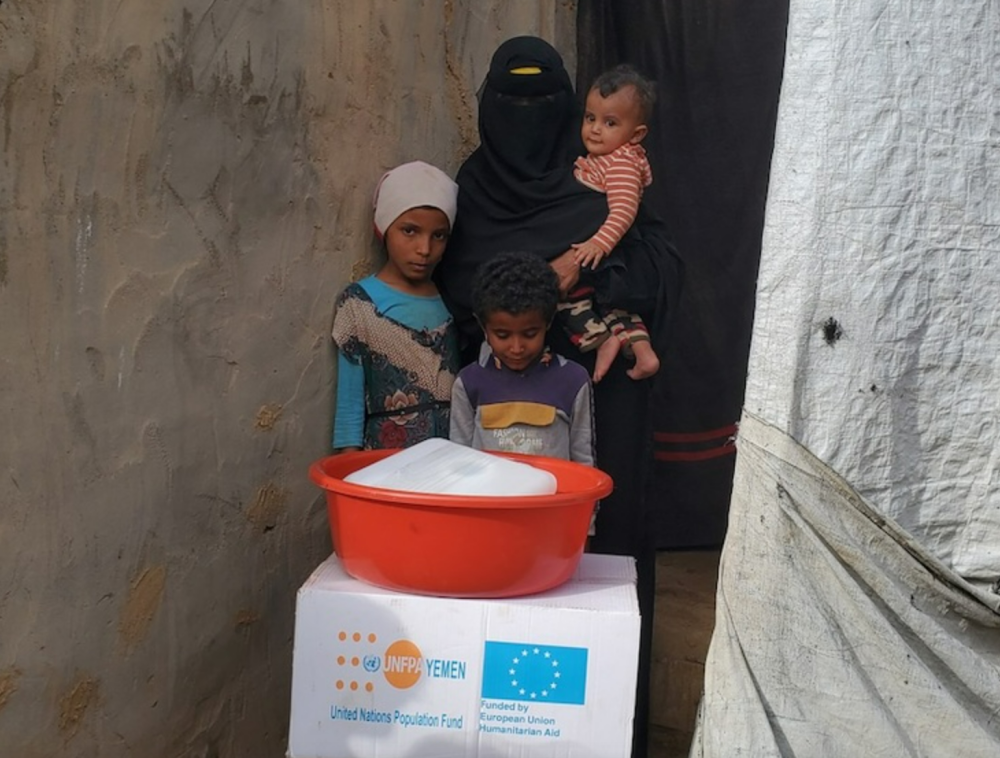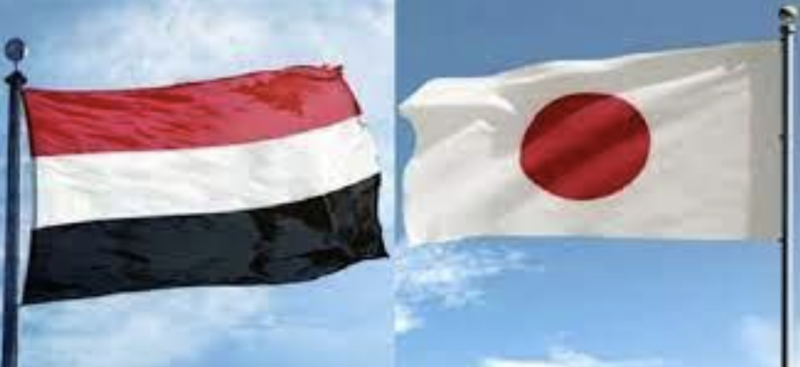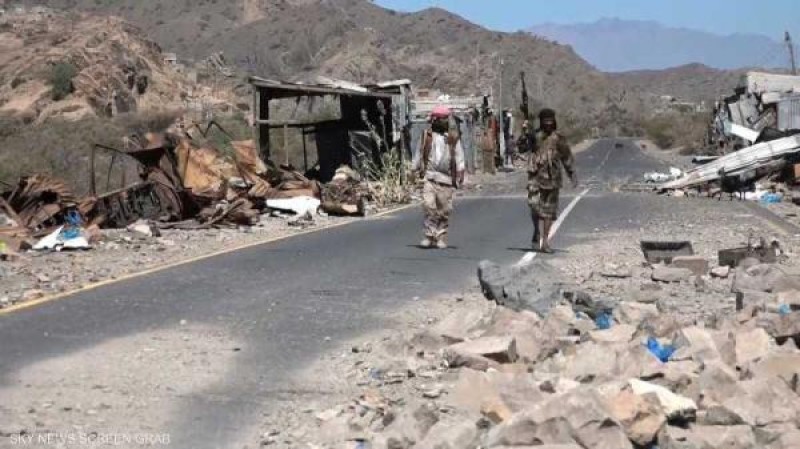Yemen : UNFPA Support the first line of response amid climate crises


“My children and I are suffering from illnesses and my husband is in prison,” said 31-year-old Amina Ismail Qasim. “Now I’ve lost my daughter, the pain is unbearable.”
Four years ago, Ms. Qasim and her family fled their home in Yemen’s western Al Hudaydah Governorate as fighting intensified around them. They headed to the Sa’ada Governorate in the north, taking refuge in a mud house in the Al Matlooh camp for displaced people. A temporary new home consisting of two bedrooms, a kitchen and a bathroom, theirs was a cramped shelter at risk of collapsing at any time.
That time came on 23 July, as torrential rains turned to floods and washed hundreds of homes away. Some 2,000 families were affected and more than 1,000 shelters were damaged or lost, and access to clean water and sanitation services became nearly impossible.
Since the start of 2024, rising violence and severe weather events in Yemen have displaced over 75,000 people, many of whom had already been forced to move multiple times. As they lose livelihoods along with access to basic health care, extreme hunger and malnutrition are soaring for millions.
For Ms. Qasim, the horror was only intensifying.
As the downpour battered her home, she lost consciousness from the extreme cold and an underlying genetic blood disorder. Although her neighbours helped her reach a local hospital for treatment, her two young daughters, nine-year-old Dalilah and four-year-old Dalal, were swept away in her absence. Dalilah was rescued, but Dalal couldn’t be saved.
“A new tragedy struck on top of our previous tragedies,” said the young mother.
Beginning in Sa’ada
In the aftermath of the disaster, a rapid response team led by UNFPA, the United Nations sexual and reproductive health agency, received an alert about the foolds, including the death of a small child. The team provided Ms. Qasim’s family with supplies to cover their immediate needs and a referral for UNFPA protection services so she could receive emergency cash assistance.
“The [provisions] covered the basics that we desperately needed in this crisis,” she said.
At a UNFPA-supported safe space for women and girls, Ms. Qasim was also assisted in obtaining identification documents that, under normal circumstances, would enable her to learn a craft and earn an income in her husband’s absence. He had been imprisoned for failing to pay his debts; his meagre income just didn’t stretch far enough.
Yet her illness means she is unable to perform many jobs, and discriminatory social norms in Yemen make it difficult – in many cases highly dangerous – for women to seek employment, health care or leave the house unaccompanied by a male guardian. For now, she is compelled to stay home, unable to afford food or medical treatments for herself or her children, who had inherited her condition.
A coordinated, rapid response
Within 72 hours of the flooding, UNFPA and partners had supported more than 1,000 families with a combination of emergency supplies: Dignity kits containing essential sanitary products, as well as ready-to-eat food rations from WFP and basic hygiene kits provided by UNICEF.
“She was still struggling to cope with the tragedy of losing her daughter, coupled with her deteriorating health,” said Shadi Al-Saady, team lead of the response unit. “She nearly fainted several times during our visit.”
The UN rapid response mechanism ensures life-saving assistance for newly-displaced people in temporary shelters and hard-to-reach areas and crisis zones; the initiative is funded by the UN Central Emergency Response Fund, the European Union and the United States.
“Many families have been affected by this crisis. Time is crucial, especially given the scale of the disaster compared to the limited staff we have on the ground,” Mr. Al-Saady explained.
Heightened vulnerabilities due to climate change
Assisting people caught up in this catastrophe was made more complex by entrenched insecurity and mass displacement after nine years of war in Yemen: More than 4.5 million people are currently displaced within the country and over 18 million are in need of urgent humanitarian assistance.
Yemen also ranks third globally among the world’s most vulnerable countries to climate change, yet it is one of the least prepared for increasing climate shocks. Many communities are ill-equipped to brace for the impacts, especially those in temporary shelters who face the worst fallout.
UNFPA research shows a clear link between climate disasters and the disproportionate impact on women, girls and newborns, including hypertensive disorders, preterm and low weight births, and stillbirths.
Amid her heartbreak, Ms. Qasim longs for security and peace. “My hopes are that my children will be cured of this illness. I hope my husband returns to us from prison, and that we can find a source of income.”

Sana’a — The Government of Japan has pledged a new humanitarian assistance package worth approximately $13.8 million to Yemen, aimed at…

Madrid — Ambassador to Spain, Aws Al-Aud, held talks with Fernando Heredia Noguer, Director of International Relations at Spain’s Minis…

Lahj — Heavy fighting broke out Tuesday evening between Southern Armed Forces and Houthi militias along the Tor al-Baha front, west of Lahj p…